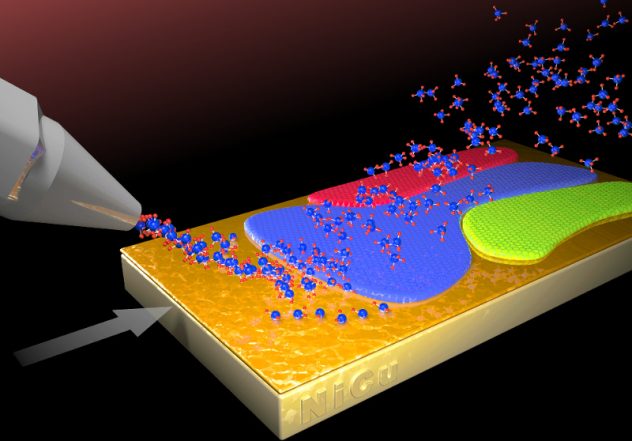Rice, Oak Ridge National Laboratory technique grows pristine foot-long graphene

Original image by Andy Sproles/Oak Ridge National Laboratory, U.S. Dept. of Energy.
Is there a way to make big sheets of pristine graphene or other two-dimensional materials? The answer is blowing in the wind.
That’s the heart of a discovery by scientists at Rice University, New Mexico State University and the Department of Energy’s Oak Ridge National Laboratory (ORNL) who grew single-atom-thick graphene monocrystals to unprecedented sizes.
The technique developed by ONRL researcher and lead author Ivan Vlassiouk, New Mexico scientist Sergei Smirnov and Rice materials theorist and co-author Boris Yakobson in principle produces pristine graphene of unlimited size and makes it suitable for roll-to-roll production. Their process deposits a narrow band of hydrocarbon precursor onto a moving substrate, with a buffer gas blowing the carbon atoms toward the growing front. Once the atoms grab ahold of the substrate and crystallize into a seed of graphene, the buffer wind prompts them to cohere into a single growing sheet.
The researchers reported in Nature Materials their success in growing atom-thin sheets of graphene a foot long and a few inches wide, limited only by the width of the equipment. The single crystal of two-dimensional carbon grows at an inch per hour in a custom-built chemical vapor deposition (CVD) furnace.
The work is featured also on the popular YouTube Science channel SciShow:
– See more at Rice News

